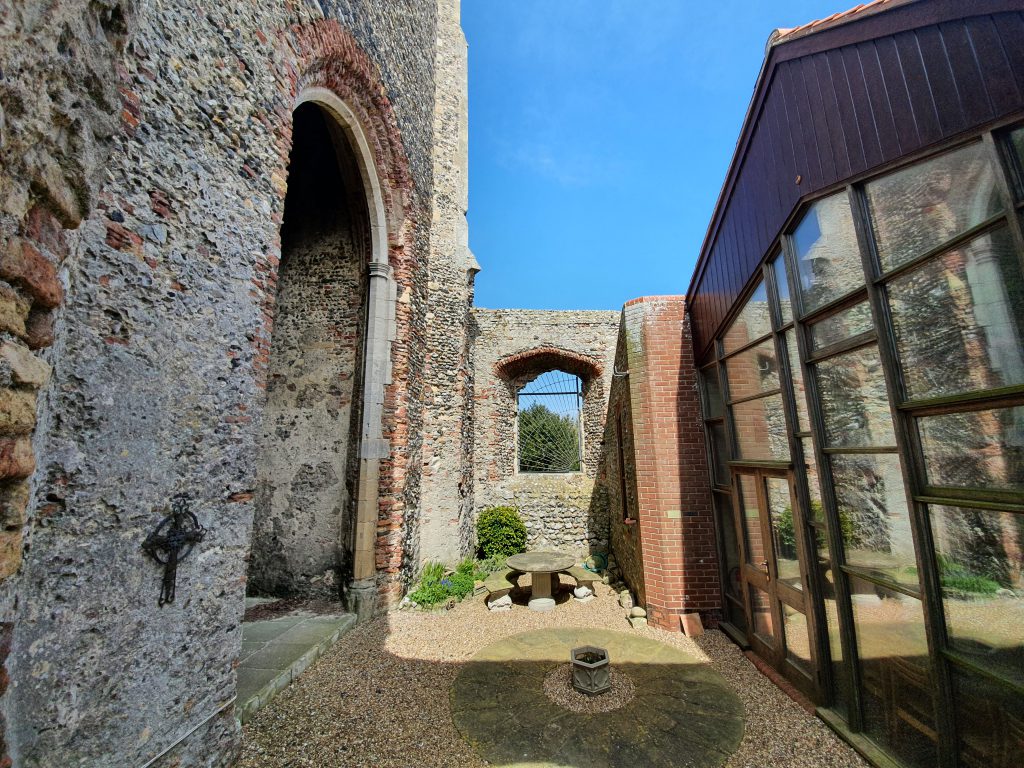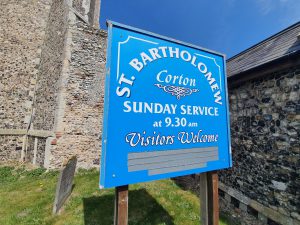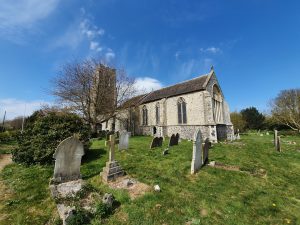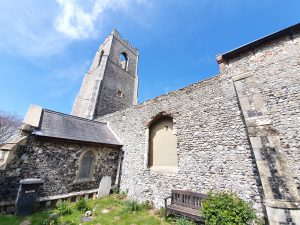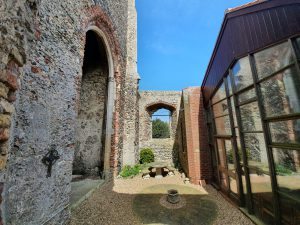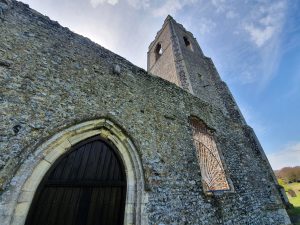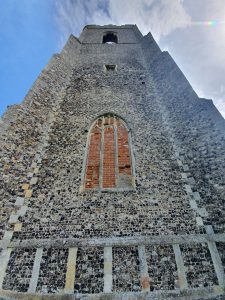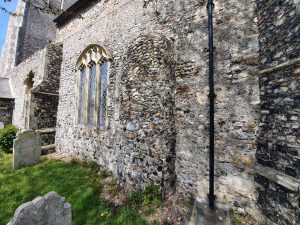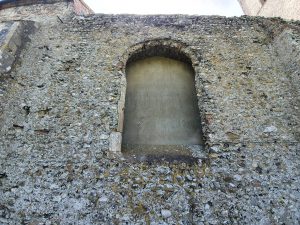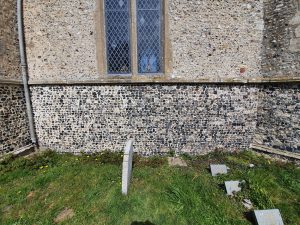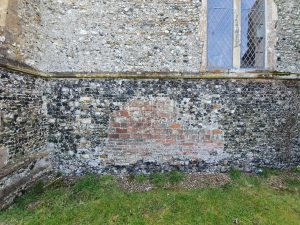Corton – St. Bartholomew’s Church
The signage perhaps tells its own story, but this is the Church of St. Bartholomew in Corton.
From the corner of the churchyard, it’s not entirely obvious that this church was mostly abandoned for many centuries, having been a victim of the Dissolution of the Monasteries. It was ruined by the seventeenth century, although repairs have been made in the eighteenth, nineteenth and twentieth centuries, as some of the building has remained in use for religious purposes.
When approaching the church it becomes apparent that the tower is derelict and only part of the structure is in use.
This section lies between the tower and the nave, creating a peaceful little sitting area where the section of the nave that joined onto the tower once stood. A more modern community centre type addition has been made within the nave, which has been incorporated with sensitivity.
One of the former windows has ironwork in to prevent access, but at least it’s decorative. Crowell’s 1846 history of Suffolk notes about the church:
“At Corton, dedicated to St. Bartholomew, was once a noble structure, of which the chancel only is now used for divine worship, the body of the church having long been a roofless ruin. The walls are mantled with ivy, and the windows robbed of their tracery; yet the interior, with all its desolation, is still effective from its ample and just proportions. The nave, which never had aisles, appears to have been constructed in the decorated style of architecture, though the chancel presents a large east window, of perpendicular character. A noble square tower, about ninety feet high, stands at the west end of the nave. A singular tradition is related respecting the foundation of this edifice. In 1810, as the sexton, Thomas Soames, was employed in the church-yard, he was accosted by a stranger, who inquired of him the name of the building, and that of its founder. To the latter question the sexton was unable to reply; and the stranger then stated that he had been in Italy during the revolution, when the French armies were overrunning the country and rifling the monasteries. Employing himself one day with examining the records of a religious house there, he discovered a manuscript, purporting to have been written by Francis Cecelia, a monk of the Premonstratensian order, who stated himself to have been Abbot of Leiston, in Suffolk, and founder of St. Bartholomew’s church at Corton. The sexton having little antiquarian curiosity, no further conversation occurred, and the stranger left him without making known the date, his name, or any further particulars.”
The tower didn’t remain in use for long, as it was constructed in the fifteenth century and it once had a rather grander window arrangement than the bricked up remains that exist today. The bricks here are falling out, I wonder whether it would be possible to remove them and put some stained glass back in.
There were fears at the end of the nineteenth century that the ivy-covered tower might fall down, which led to a restoration fund being set up in 1890 to secure funds to ensure its survival. Looking at old newspaper reports though, these restoration funds didn’t seem to be rare, there was another set up twenty years later and securing the building appears to have been a challenge for generations of congregations.
There are scars all over the building of previous doorways and windows, with this perhaps being the entrance to a side chapel.
Another blocked window.
I’m not a flint expert, but that’s some neat flintwork on the base of the wall.
I’d say that the repair work here is a little cruder.
It’s an intriguing church, although unfortunately it was locked up when I visited. Apparently the church does usually make an effort to either be open or have keyholder information available, so hopefully I’ll be able to see inside on a future visit.

